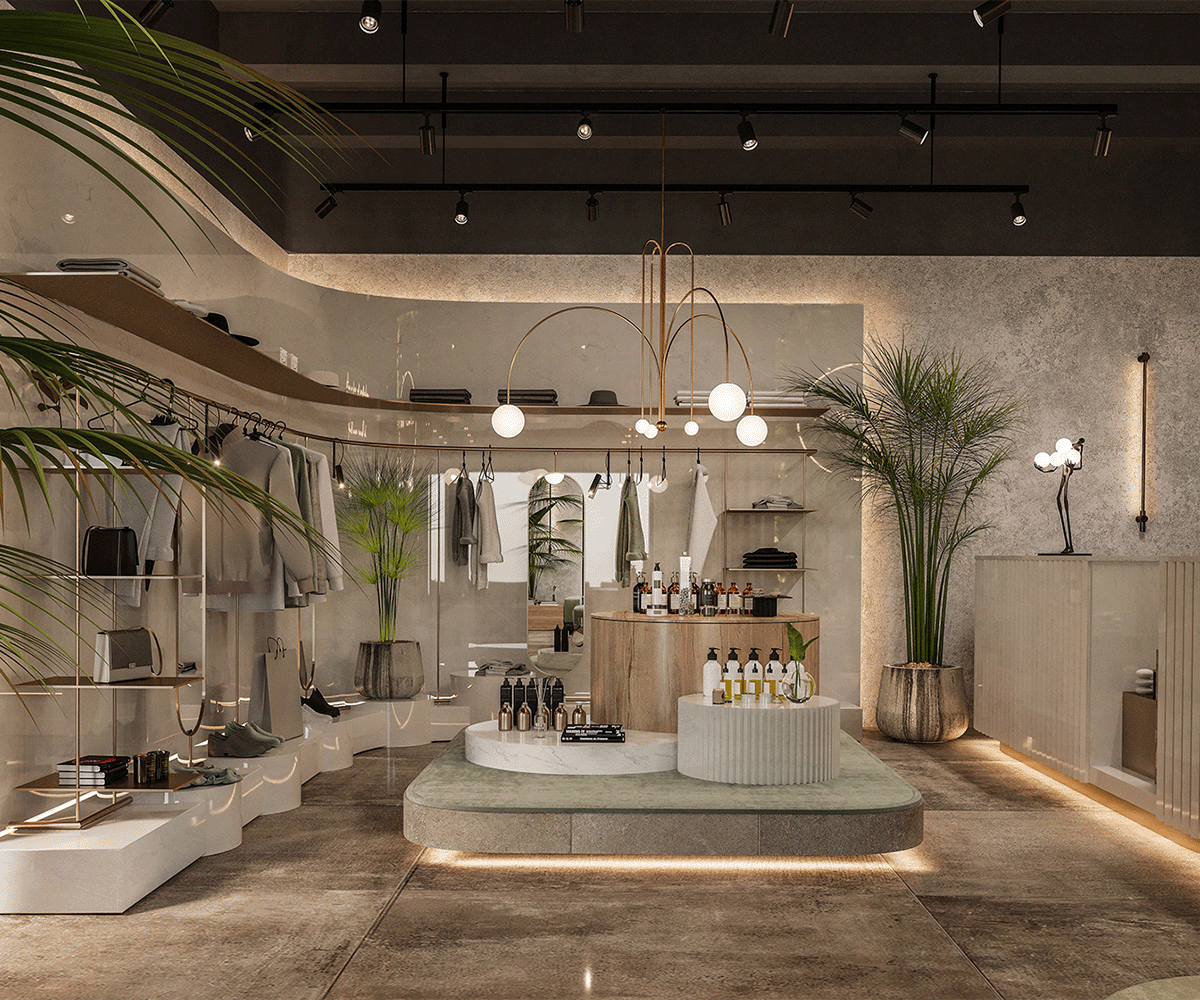In the rapidly evolving world of retail, the design of physical stores is undergoing a significant transformation. As e-commerce continues to grow, brick-and-mortar stores are redefining their role, focusing on creating unique and immersive shopping experiences that can’t be replicated online. The future of retail design is all about engaging customers on a sensory level, fostering emotional connections, and offering memorable, interactive experiences. Here’s how retailers are reshaping their spaces to captivate and retain customers.
1. Integration of Technology
Technology is at the forefront of the revolution in retail design. Retailers are increasingly incorporating digital elements to enhance the shopping experience. Some key technological advancements include:
- Augmented Reality (AR) and Virtual Reality (VR): AR and VR allow customers to visualize products in different settings or try on items virtually. For example, furniture stores use AR apps to let customers see how a piece would look in their home, while clothing stores use VR to provide virtual fitting rooms.
- Interactive Displays: Touchscreens and digital kiosks provide product information, personalized recommendations, and self-checkout options, making shopping more convenient and engaging.
- Smart Mirrors: These mirrors use AR to allow customers to try on clothes without physically changing, offering different color options and styles with a swipe.
- Mobile Integration: Seamless integration with mobile apps enables personalized shopping experiences, loyalty rewards, and mobile payments, enhancing convenience and customer engagement.
2. Experiential Spaces
Modern retail design is shifting towards creating experiential spaces that go beyond traditional shopping. These spaces focus on engaging customers through interactive and immersive experiences, such as:
- In-Store Events and Workshops: Hosting events, classes, or workshops related to the brand’s products can draw customers in and create a community around the brand.
- Pop-Up Shops and Themed Areas: Temporary pop-up shops or themed areas within a store can create a sense of urgency and excitement, encouraging customers to visit more frequently.
- Product Demonstrations: Live demonstrations and interactive displays allow customers to experience products firsthand, fostering a deeper connection and understanding of the items.
3. Personalization and Customization
Personalization is a powerful tool in creating an immersive shopping experience. Retailers are leveraging data and technology to tailor experiences to individual customers’ preferences and needs. Examples include:
- Personal Shopping Assistants: Both in-person and virtual shopping assistants can provide personalized product recommendations based on customer preferences and shopping history.
- Customizable Products: Offering customization options, such as personalized engravings or bespoke product features, can create a unique and memorable shopping experience.
- Targeted Promotions: Using data analytics, retailers can offer targeted promotions and discounts that align with customers’ interests and past purchases, enhancing customer loyalty.
4. Emphasis on Sensory Experiences
Engaging multiple senses is a key aspect of creating immersive retail environments. Retailers are focusing on:
- Ambient Scenting: Using specific scents to create a pleasant atmosphere or evoke certain emotions can enhance the shopping experience and make it more memorable.
- Soundscapes: Curated music and sounds that align with the brand’s identity can influence customers’ mood and shopping behavior.
- Tactile Elements: Allowing customers to touch and feel products can create a deeper connection and enhance the overall experience. Stores are incorporating more hands-on displays and interactive elements.
5. Sustainable and Ethical Design
As consumers become more environmentally conscious, sustainable and ethical design practices are becoming increasingly important in retail. This includes:
- Eco-Friendly Materials: Using sustainable materials for store fixtures, furnishings, and packaging.
- Energy Efficiency: Implementing energy-efficient lighting, heating, and cooling systems to reduce the store’s environmental footprint.
- Ethical Sourcing: Highlighting products that are ethically sourced and promoting fair trade practices can resonate with conscientious consumers and build brand loyalty.
6. Blending Online and Offline Experiences
The future of retail design lies in seamlessly blending online and offline experiences. Retailers are creating omnichannel strategies that provide a consistent and integrated customer journey across all touchpoints. Examples include:
- Click-and-Collect Services: Allowing customers to order online and pick up in-store combines the convenience of e-commerce with the immediacy of physical shopping.
- In-Store Online Shopping: Providing tablets or kiosks for customers to browse and order online while in-store, ensuring they have access to the full range of products.
- Unified Loyalty Programs: Implementing loyalty programs that reward customers for both online and offline purchases, encouraging them to engage with the brand across multiple channels.
Conclusion
The future of retail design is centered around creating immersive and engaging shopping experiences that go beyond mere transactions. By integrating technology, focusing on personalization, and emphasizing sensory experiences, retailers can create memorable and impactful environments that attract and retain customers. As the line between online and offline shopping continues to blur, the key to success lies in offering a seamless, cohesive, and emotionally resonant experience that keeps customers coming back for more.

